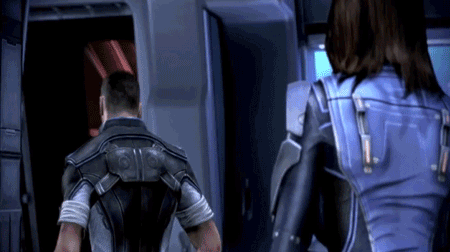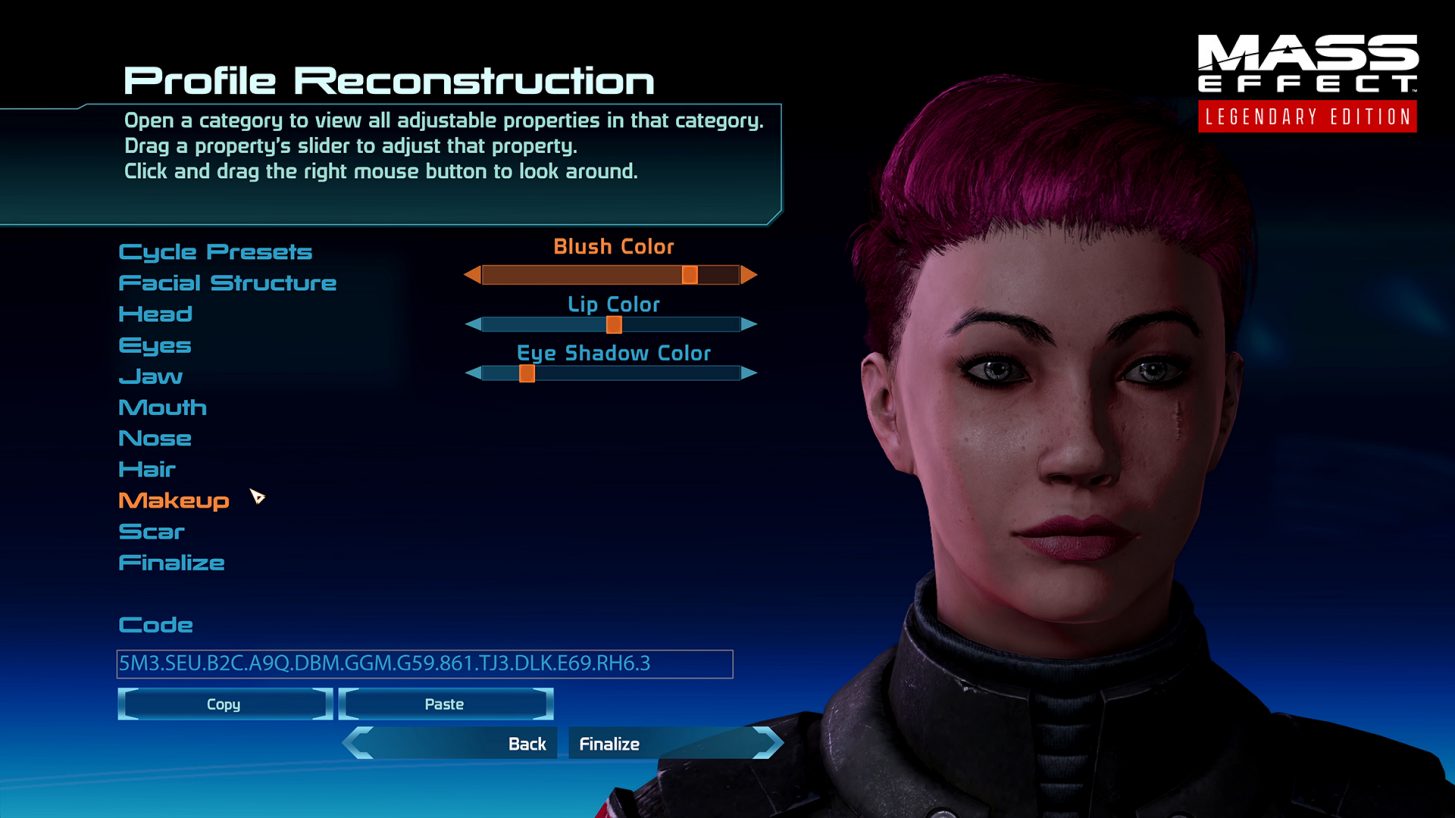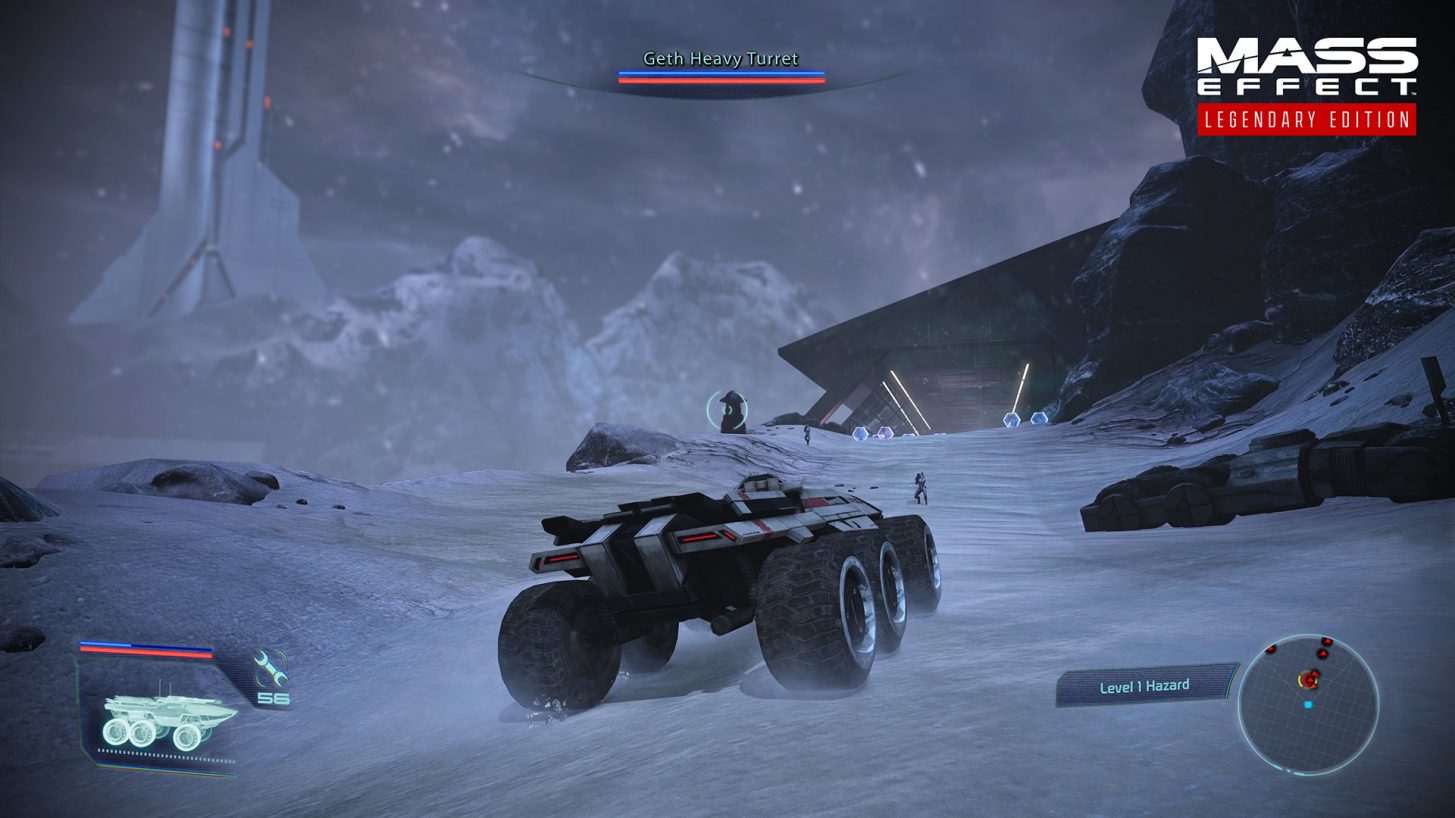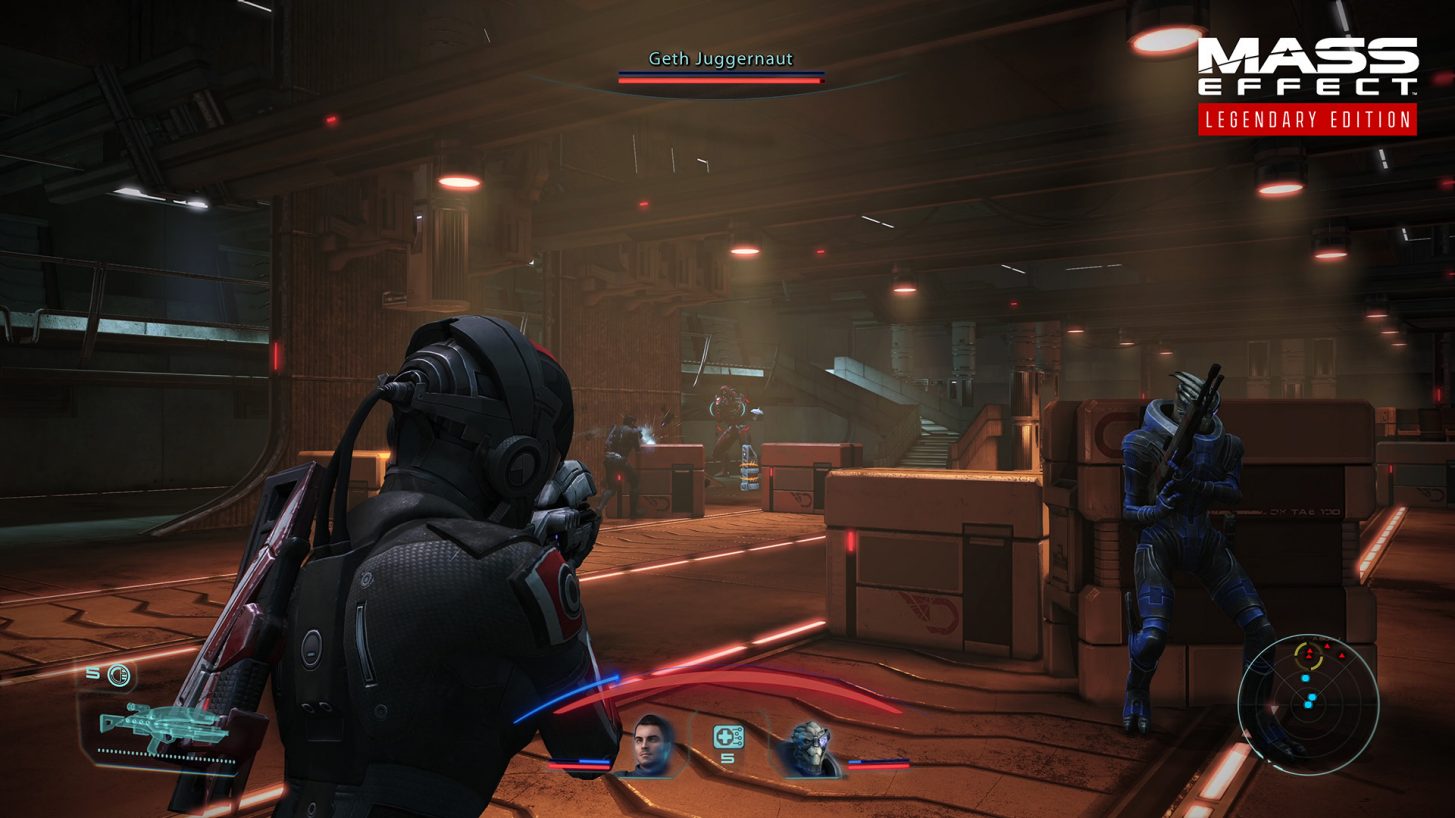Combat in the Mass Effect trilogy has evolved across the series, with each game’s experience being different. We wanted to make the experience better across the board, but we didn’t want to unnecessarily change what our fans have come to love about each game. That proved a unique challenge, as the first game is quite different from the second and third in terms of gameplay and combat. Mass Effect was heavily influenced by traditional RPG mechanics, like the randomness of a dice roll and pen-and-paper stat building. As a result, weapons in Mass Effect often felt less accurate and reliable than the gunplay in Mass Effect 2 and 3.
We heard the consistent feedback that it was pretty frustrating to take a few shots with an assault rifle and suddenly have the reticle enlarge to span a large portion of the screen, so we looked at tuning the mechanics to provide better handling without outright scrapping the spirit of the original games.
In the first Mass Effect, accuracy (including reticle bloom and weapon sway) has been tuned across all weapons to allow players to maintain more consistent firepower while still managing their shots/overheat meter. We’ve also improved the aiming down sights (ADS) camera view to be tighter on combat so that ADS is more accurate (like the second and third games), and we’ve improved the aim assist to provide better precision. These small behind-the-scenes changes collectively make combat much “snappier,” putting more control into the player’s hands.
Abilities have also been rebalanced in the first game
. For example, the “Immunity” ability now grants a powerful defensive buff that lasts a brief period of time instead of being a small buff that lasts indefinitely.
The following overview lists gameplay changes we made specifically to the first Mass Effect, with the goal of bringing it a bit more in line with the rest of the trilogy:
- Shepard can now sprint out of combat
- Melee attacks are now mapped to a button press rather than automatically occurring based on proximity to an enemy
- Weapon accuracy and handling has been significantly improved
- Reticle bloom is more controlled
- Weapon sway removed from sniper rifles
- Aiming down sights/”tight aim” camera view has been improved
- Improved aim assist for target acquisition
- All relevant enemies now take headshot damage in the first game
- Previously some did not, including humanoid enemies
- Ammo mods (Anti-Organic, Anti-Synthetic, etc.) can now drop throughout the whole game
- Previously, these stopped dropping at higher player levels
- They are now also available to purchase from merchants
- All weapons can be used by any class without penalty
- Specializations (the ability to train/upgrade certain weapons) are still class-specific
- Weapons cool down much faster
- Medi-gel usage has been improved
- Base cooldown reduced
- Levelling benefits increased
- Increased Liara’s bonus to cooldowns
- Inventory management improvements
- Items can now be flagged as “Junk”
- All Junk items can be converted into Omni-gel or sold to merchants at once
- Inventory and stores now have sorting functionality
- Some abilities have been rebalanced
- Weapon powers (i.e., those that are unlocked on each weapon type’s skill tree) have been improved:
- Effectiveness/strength is increased (duration reduced in some cases)
- Heat now resets on power activation
Additional gameplay improvements
Beyond general gunplay changes, we’ve made some specific changes to encounters, enemies, and how you engage in combat. We found a few opportunities to bring the first game in line with the second and third games, and we also found some systems across the whole trilogy that needed a tune up.
Without spoiling too much for new players, one example is the boss encounter on Noveria. The boss room has been slightly reworked, keeping it very familiar but making it less cramped. You’ll also be much less prone to being thrown around by biotic abilities.
Other targeted combat updates we’ve made include:
- Squadmates can now be commanded independently of each other in the first Mass Effect, the same way you can command them individually in Mass Effect 2 and 3
- Some boss fights and enemies in the first game have been tweaked to be fairer for players but still challenging
- Cover has been improved across the trilogy
- Additional cover added to some encounters
- Entering and exiting cover is now more reliable
- XP has been rebalanced in the first game (details below)
- Ammo drops have been rebalanced in Mass Effect 2 (details below)
The Mako
But of course, we’ve got to talk about the (in)famous M-35 Mako. This legendary vehicle from the first Mass Effect has been “calibrated” to perform better than ever. In the original game, the physics tuning for the Mako made it feel too light and bouncy, even at times becoming uncontrollable, but it’s now a much smoother ride while still being “loveable” like before. (Yes, you can still drive off cliffs to your heart’s content).
Its functionally has also been improved with faster shield recharging and new thrusters added to the rear, allowing for a speed boost when you’re inevitably trying to scale up the side of a near-vertical cliff. (We all do it.) This boost’s recharge is independent from the jump jets on the vehicle’s underside, so you can use both at once or separately.
These are the calibrations you can expect to experience when driving the Mako:
- Improved handling
- Physics tuning improved to feel “weightier” and slide around less
- Improved camera controls
- Resolved issues preventing the Mako from accurately aiming at lower angles
- Shields recharge faster
- New thrusters added for a speed boost
- Its cooldown is separate from the jump jets’
- The XP penalty while in the Mako has been removed
- Touching lava no longer results in an instant Mission Failure and instead deals damage over time


